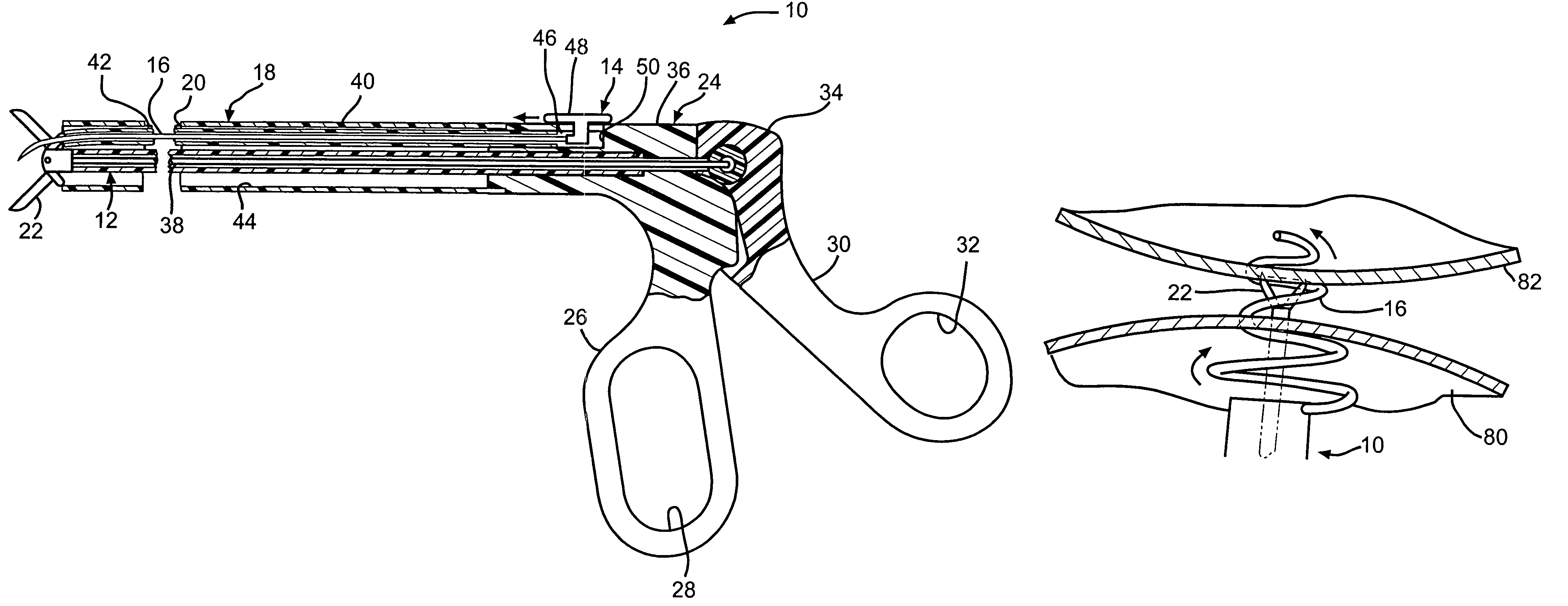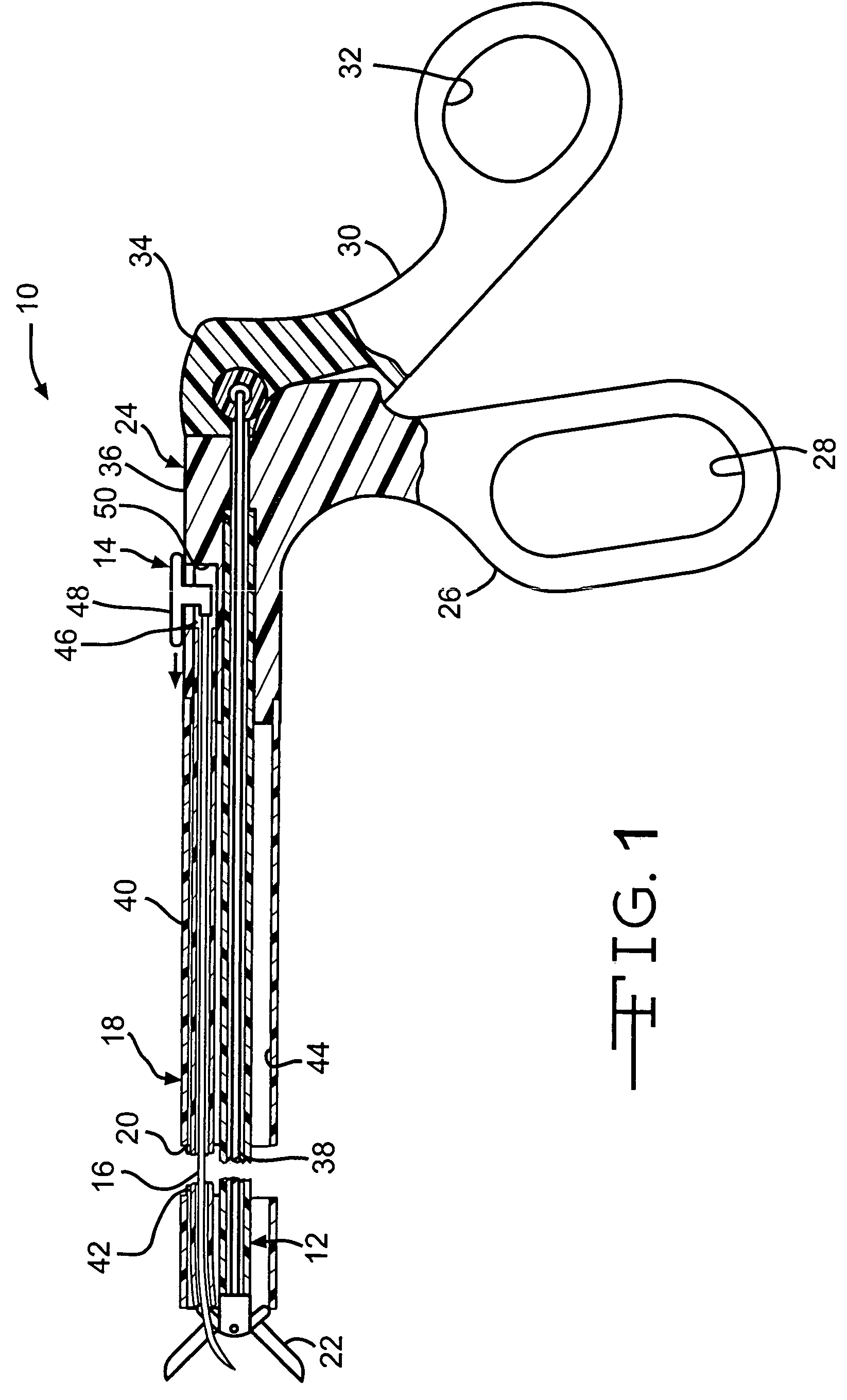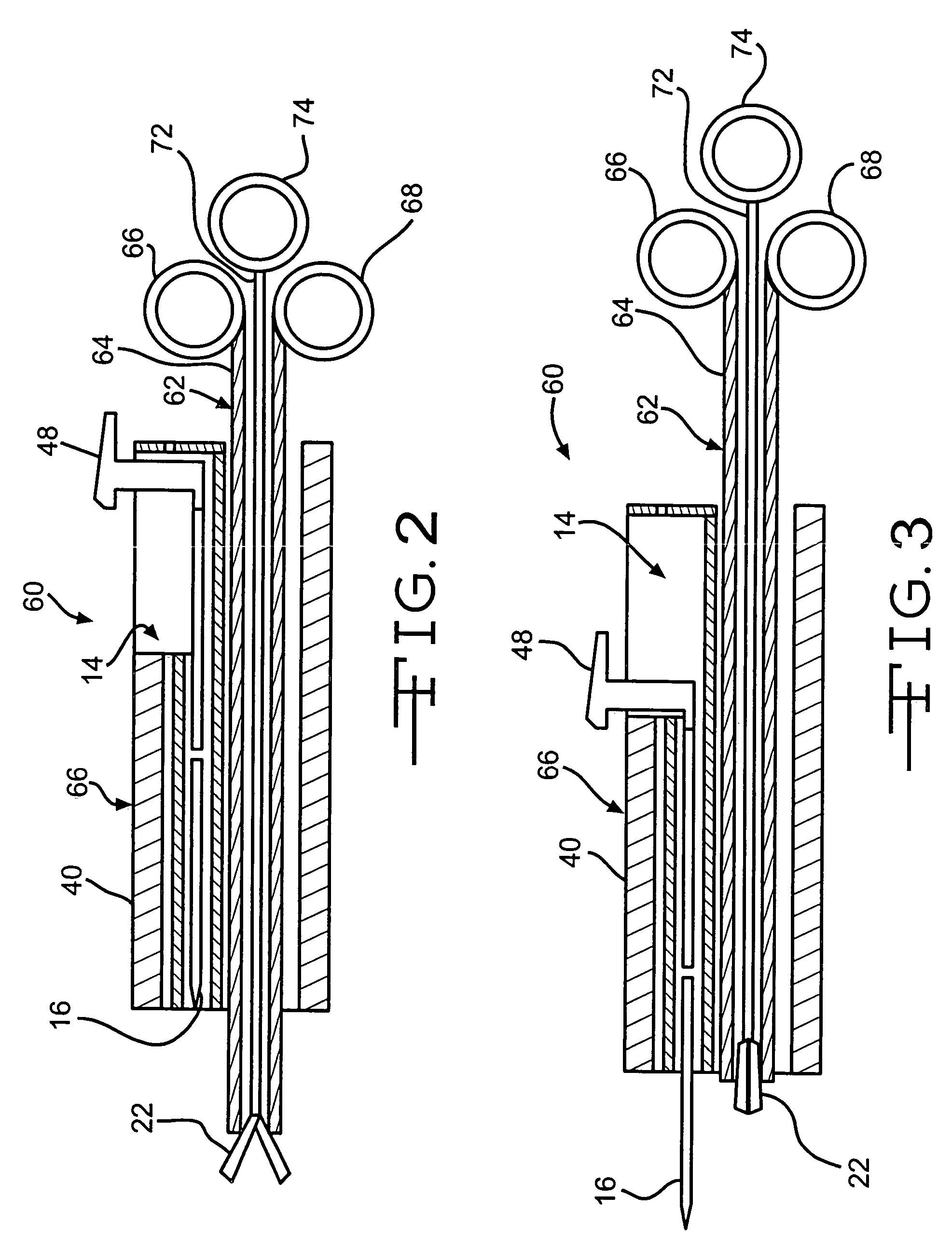Device and method for intralumenal anastomosis
a technology of anastomosis and lumbar tube, which is applied in the field of surgery, can solve the problems of many non-operative therapies for morbid obesity that have been tried with virtually no permanent success, and failed to correct the condition
- Summary
- Abstract
- Description
- Claims
- Application Information
AI Technical Summary
Benefits of technology
Problems solved by technology
Method used
Image
Examples
Embodiment Construction
[0029]Turning to the drawings, wherein like numerals denote like components throughout the several views, in FIG. 1, an anastomosis instrument 10 advantageously incorporates both a grasping mechanism 12 as well as an extrusion mechanism 14 for dispensing a straightened anastomosis device (“clamp”) 16 for piercing two tissue walls (not shown in FIG. 1) of adjacent lumens. The anastomosis device 16 is formed of a Shape Memory Alloy (SMA) that was annealed into a flattened coil and then straightened. After dispensing, the anastomosis device 16 thereafter responds to no longer being constrained by the anastomosis instrument 10 and by being warmed by body heat. Thereafter, tightened coils are formed to provide an accurate and consistent anastomosis with a patent lumen in an endoscopic setting, perhaps obviating the need for laparoscopic punctures.
[0030]In the version of the anastomosis instrument 10 depicted in FIG. 1, the grasping mechanism 12 is similar to generally known graspers or f...
PUM
 Login to View More
Login to View More Abstract
Description
Claims
Application Information
 Login to View More
Login to View More - R&D
- Intellectual Property
- Life Sciences
- Materials
- Tech Scout
- Unparalleled Data Quality
- Higher Quality Content
- 60% Fewer Hallucinations
Browse by: Latest US Patents, China's latest patents, Technical Efficacy Thesaurus, Application Domain, Technology Topic, Popular Technical Reports.
© 2025 PatSnap. All rights reserved.Legal|Privacy policy|Modern Slavery Act Transparency Statement|Sitemap|About US| Contact US: help@patsnap.com



